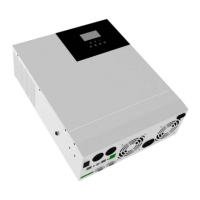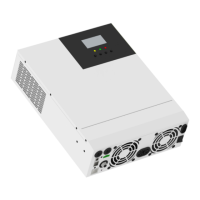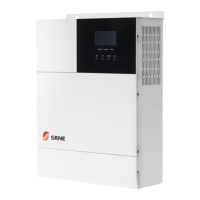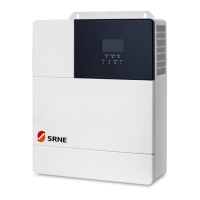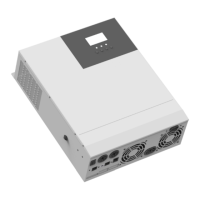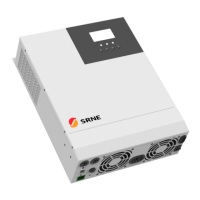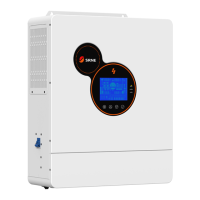Do you have a question about the Srne HFP4850S80-145 and is the answer not in the manual?
Key safety guidelines for installation and operation to prevent hazards.
Overview of the HFP series hybrid solar charge inverter and its key features.
Explanation of the components and system application scenario of the inverter.
Detailed illustration and labeling of the inverter's external components.
Technical drawings showing the physical dimensions and layout of the inverter.
Crucial safety and procedural guidelines to follow before and during installation.
Recommended wire diameters and circuit breaker types for PV, AC, and battery connections.
Step-by-step guide for installing the inverter, including wiring and power-on procedures.
Warnings and guidelines for parallel connection of batteries, AC wiring, communication, and current sharing.
Diagrams illustrating parallel connection of multiple inverters in single phase configurations.
Diagrams for parallel connection of inverters in split phase configurations.
Explains four charging modes: PV priority, Mains priority, Hybrid, and Only Solar.
Describes three output modes: PV priority, Mains priority, and Battery priority.
Overview of the LCD screen, indicators, and operation buttons on the panel.
Detailed explanation of LCD icons, indicators, and real-time data viewing methods.
Instructions for navigating and editing setup parameters using the device buttons.
Settings for output source priority, frequency, AC input, and charging modes.
Configuration for battery types, protection parameters, equalization, and alarms.
Settings for communication ports, BMS, split phase, and AC output modes.
Explanation of dry node function and details on RS485/USB communication ports.
Functionality and connection details for parallel communication and current sharing.
Lists and describes various protection mechanisms integrated into the inverter.
Lists fault codes, their impact, and corresponding handling measures for troubleshooting.
| Model | HFP4850S80-145 |
|---|---|
| Input Voltage | 230 VAC |
| Frequency Range | 50 Hz/60 Hz (Auto sensing) |
| Output Voltage Regulation | 230 VAC ±5% |
| Surge Power | 10000VA |
| Efficiency (Peak) | 93% |
| Waveform | Pure sine wave |
| Battery Voltage | 48 VDC |
| Floating Charge Voltage | 54 VDC |
| Maximum PV Array Open Circuit Voltage | 145VDC |
| Maximum Charging Current | 80A |
| Maximum Efficiency | 98% |
| Standby Power Consumption | 2W |
| Humidity | 5% to 95% Relative Humidity (Non-condensing) |
| Output Voltage | 230 VAC |
| Selectable Voltage Range | 170-280 VAC (For Personal Computers), 90-280 VAC (For Home Appliances) |
| Transfer Time | 10 ms (For Personal Computers), 20 ms (For Home Appliances) |
| Storage Temperature | -15°C~60°C |
| Protection Features | Overload, Short Circuit, Over Temperature |
| Rated Power | 5000VA/5000W |
